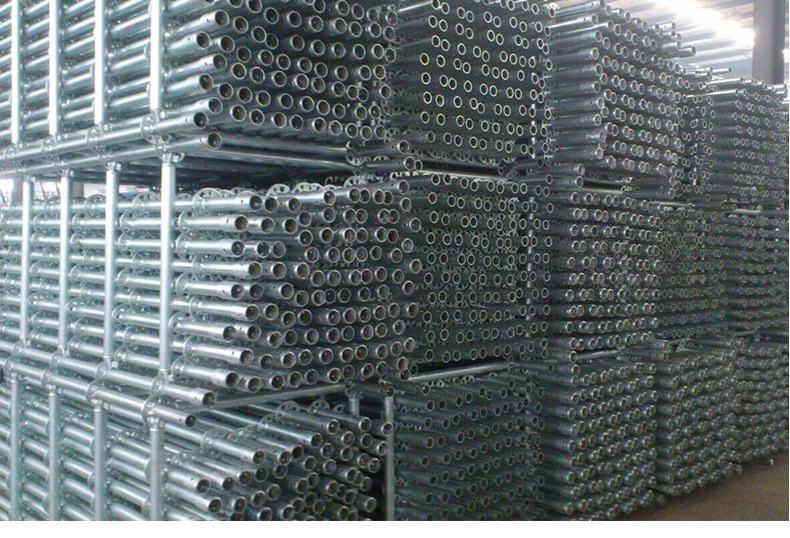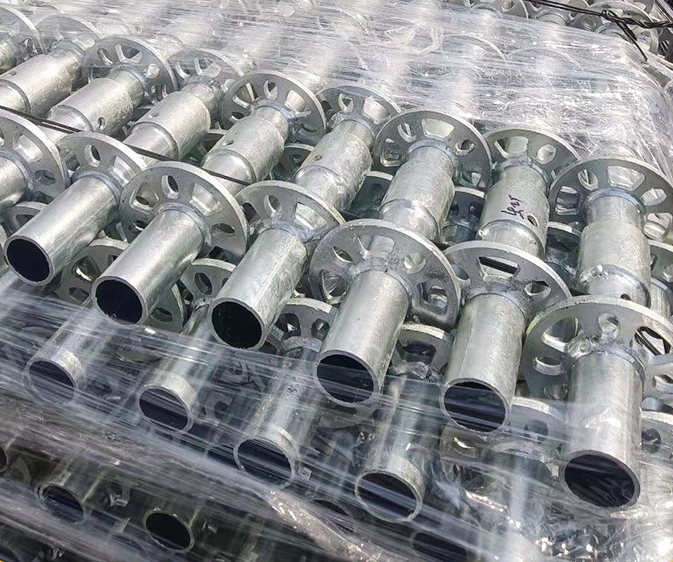Please Choose Your Language
Tel: +86-131-8042-1118
E-mail:
E-mail:
26 Huanghai Road, Leting Economic Development Zone, Hebei Province, China


Views: 0 Author: Site Editor Publish Time: 2025-07-01 Origin: Site











Scaffolding systems play a crucial role in ensuring the safety, stability, and productivity of construction projects. Among the many factors that determine the effectiveness of a scaffolding system, vertical load capacity stands out as one of the most critical considerations. A scaffolding system's ability to handle vertical loads without compromising safety is essential for maintaining the integrity of the structure and protecting workers on-site.
Vertical load capacity refers to the ability of a scaffolding system to support the weight that is applied vertically to it. This weight includes the weight of workers, equipment, and building materials that are placed on the scaffolding as construction progresses. The vertical load capacity is a measure of how much weight the scaffolding can bear before it begins to show signs of structural failure, instability, or collapse.
In a construction project, scaffolding serves as the platform for workers to access various parts of a building at elevated heights. The weight of the workers, tools, and materials placed on the scaffolding adds to the stress on the scaffolding structure. This is why it is so important for scaffolding systems, such as Ringlock scaffolding, to have an appropriate vertical load capacity to ensure that they are safe and stable throughout the construction process.
Why is vertical load capacity crucial in scaffolding systems? The vertical load capacity directly impacts the safety of workers, the stability of the scaffolding structure, and the overall success of the construction project. Without sufficient load-bearing capacity, scaffolding can collapse under pressure, leading to potentially dangerous accidents, project delays, and financial losses. Therefore, it is vital to select scaffolding systems that can handle the anticipated load demands of the specific project.
The vertical load is one of the most significant factors influencing the safety of scaffolding systems. Any overloading of scaffolding can result in a collapse or structural failure, which poses significant risks to workers on-site. Scaffolding is not only designed to support the weight of materials but also to maintain structural stability during use. Therefore, ensuring that the scaffolding system can handle the expected vertical loads is crucial for preventing accidents and maintaining a safe working environment.
When a scaffolding system experiences a vertical load, the weight is transferred through the vertical standards (poles) and horizontal beams. The design of these components must be strong enough to bear the weight without bending, twisting, or collapsing. The more weight that is added to the system, the greater the stress placed on the joints, connectors, and materials. If the system is not designed to handle these stresses, it can result in failure.
Ringlock scaffolding systems are engineered to handle vertical loads efficiently. The modular design of Ringlock scaffolding provides enhanced strength and stability when subjected to vertical loads, making it a preferred choice for construction projects that require scaffolding to bear significant weights.
To prevent overload and structural damage, it is essential to adhere to the load capacity limits defined by the system. Scaffolding should only be used within its rated load limits to ensure that it remains safe and stable. If the load exceeds the capacity, it can cause deflection, which leads to deformation of the scaffolding structure. In extreme cases, overloads can lead to the collapse of the entire scaffolding system.

Ringlock scaffolding is designed with enhanced load-bearing capacity in mind. The system's modular design, use of high-strength materials, and advanced locking mechanisms allow it to perform exceptionally well under vertical loads.
Modular Components: The Ringlock system features standardized components, including vertical standards, horizontal braces, and diagonal braces. These components are designed to fit together seamlessly, distributing the vertical load evenly across the structure. The system's modularity allows for easy adjustment and scaling based on the specific load requirements of the project.
Strong Materials: Ringlock scaffolding is constructed using high-strength steel that is corrosion-resistant. Steel is widely known for its ability to handle heavy loads without bending or breaking. This material ensures that the scaffolding can bear significant vertical loads without compromising its integrity.
Optimized Connections: The Ringlock system uses a wedge-locking mechanism that ensures tight, secure connections between components. The locking system contributes to the structural strength of the scaffolding, reducing the risk of joint failure under heavy loads. The connection points are reinforced to handle the stress that comes with vertical loading.
Vertical Standards: The vertical standards are the key load-bearing components of the system. The strength of these standards is critical for handling vertical loads. Ringlock's vertical standards are engineered to distribute the load efficiently and to maintain stability during construction.
Load Testing: The Ringlock system is regularly tested to ensure that its vertical load capacity meets safety standards. This includes tests to simulate real-world conditions where scaffolding systems are subjected to significant loads during the construction process.

To ensure that Ringlock scaffolding systems can handle the required vertical loads, they undergo rigorous testing and are subject to strict quality control standards.
Vertical load testing involves applying incremental weights to the scaffolding to determine the maximum load it can handle before failure. This testing is conducted to ensure that the scaffolding meets safety standards and is capable of performing under actual working conditions. For Ringlock systems, these tests are carried out in controlled environments and adhere to established standards such as:
EN 12810: This European standard specifies the requirements for the design and performance of scaffolding systems, including vertical load capacity testing. It ensures that the scaffolding is safe for use under various conditions.
ANSI Standards: The American National Standards Institute (ANSI) also sets requirements for scaffolding systems used in the United States. ANSI standards ensure that the scaffolding meets the safety and performance criteria, including vertical load limits.
Factory Testing and Certification: Ringlock scaffolding components undergo factory testing to ensure that each part is up to standard. Certifications from recognized bodies provide additional assurance that the scaffolding meets safety requirements.
Manufacturers of Ringlock scaffolding systems are committed to maintaining high standards of quality control throughout the production process. From material selection to final inspection, every component is checked for compliance with international standards. This ensures that the system performs reliably and safely under vertical loads.
Vertical load capacity is a fundamental aspect of scaffolding design, particularly in systems like Ringlock scaffolding, which are used in a variety of construction projects. Ensuring that scaffolding can support the required vertical loads is essential for maintaining safety and stability on construction sites.
Ringlock scaffolding excels in handling vertical loads due to its modular design, high-strength materials, and optimized locking mechanisms. These features allow the system to handle heavy loads while maintaining safety and stability. By adhering to stringent quality standards and undergoing rigorous load testing, Ringlock scaffolding systems offer a reliable solution for construction projects that require strong and durable scaffolding.
In any construction project, whether it's a high-rise building, industrial site, or bridge construction, ensuring the vertical load capacity of scaffolding systems is critical to the overall success of the project. With Ringlock scaffolding, construction teams can be confident that their scaffolding systems will perform safely and effectively under the required vertical loads.
For more information on Ringlock scaffolding systems and how they can contribute to the success of your next project, visit Huabei Yiande Scaffolding Manufacture Co., Ltd. for high-quality scaffolding solutions.